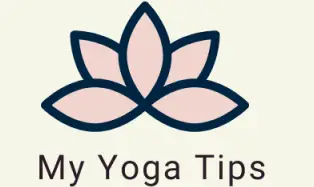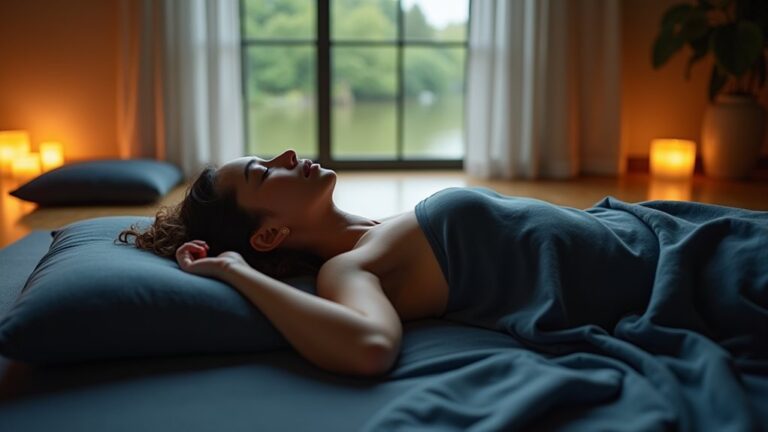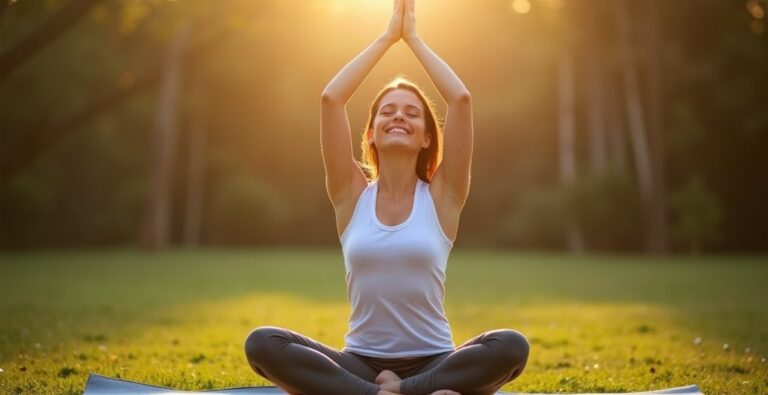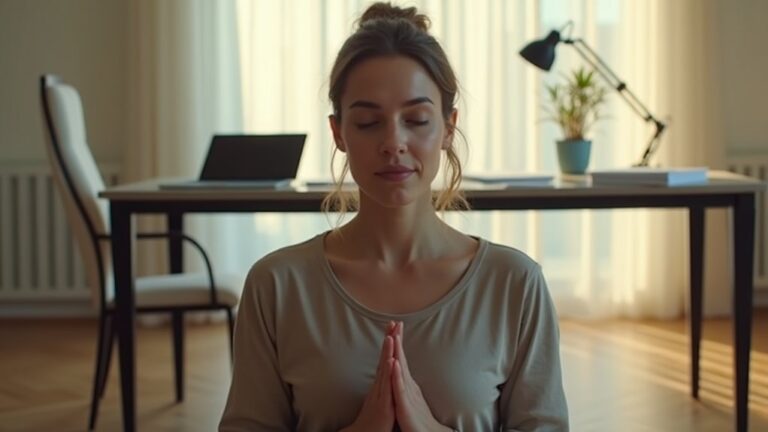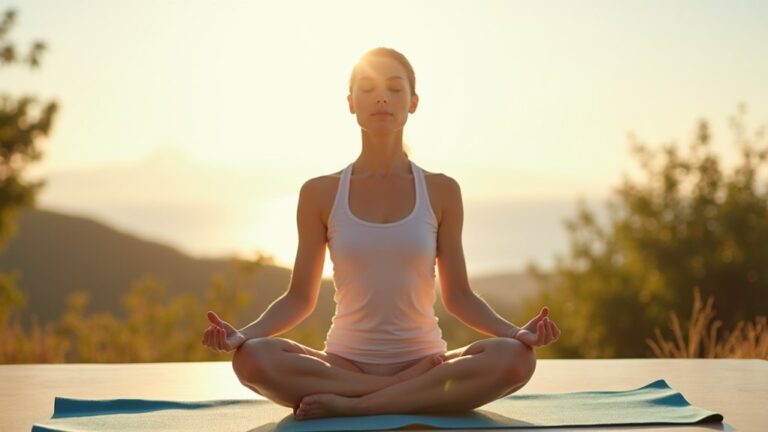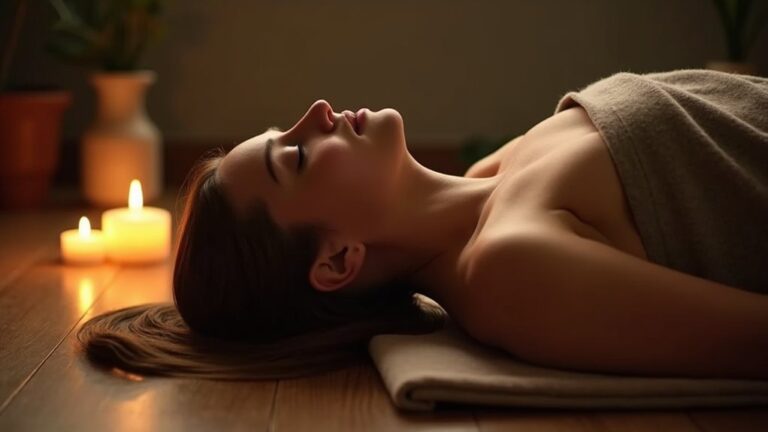5 Yoga Poses That Promote Relaxation and Inner Peace

When you’re looking to unwind and find inner peace, incorporating specific yoga poses into your routine can be incredibly beneficial. Poses like the Supine Bound Angle Pose and Butterfly Pose target the lower body, opening the hips and calming the inner thighs, while Legs-Up-the-Wall Pose alleviates tension in your legs and soothes your nervous system. For upper body relaxation, Seated Forward Bend and Child’s Pose are excellent choices, stretching the hamstrings and promoting overall bodily relaxation. As you explore these poses, you’ll discover how they can profoundly impact your mental and physical well-being. How do these poses work together to create a holistic approach to relaxation?
Yoga Poses for Lower Body Relaxation
When you’re looking to relax your lower body through yoga, several poses can be particularly effective.
For targeting the hips and thighs, consider the Supine Bound Angle Pose (Supta Baddha Konasana), which opens the hips and relaxes the abdominal area, promoting ease through the core and lower body.
The Butterfly Pose (Baddha Konasana) is another excellent choice, relaxing the inner thighs and pelvic area, and when paired with deep breathing, it can soothe the mind.
For the legs and feet, Legs-Up-the-Wall Pose (Viparita Karani) relieves tension and calms the nervous system, while Seated Forward Bend (Paschimottanasana) stretches the hamstrings and calves, aiding in lower leg relaxation. This practice also helps in reducing stress and promoting overall well-being.
These poses, when practiced with proper support and breathing, can greatly enhance lower body relaxation and overall well-being.
Yoga Poses for Upper Body and Spine Relaxation
To relax your upper body and spine, incorporate yoga poses that specifically target the shoulders, chest, and entire spinal column.
Eagle Arms (Garudasana)
Eagle Arms is a simple yet effective pose for releasing tension in the upper back and shoulders. You can practice this from the traditional Eagle Pose or even while sitting in a chair.
It involves gently wrapping one arm over the other, lifting your elbows to shoulder height, and drawing your shoulder blades down your back. This pose helps in releasing tension in the shoulder blades and rhomboids.
Chest and Spine Opening
- Extended Puppy Pose (Uttana Shishosana): Combines elements of Child’s Pose and Downward-Facing Dog, lengthening and stretching the entire spine, opening the chest and shoulders.
- Thread the Needle Pose (Urdhva Mukha Pasasana): Opens the upper back and gives the shoulders a release, drawing the shoulder blades away from the spine.
- Downward-Facing Dog (Adho Mukha Svanasana): Stretches the entire spine, including the upper back, neck, and shoulders.
- Cat-Cow Flow: Shifts slowly between Cat and Cow postures, stretching the upper back and promoting flexibility in the spine. Maintaining good posture while practicing these poses is crucial for maximizing their benefits and preventing additional strain on the upper back.
These poses will help you achieve a more relaxed and aligned upper body.
Benefits of Deep Breathing in Yoga for Relaxation

After releasing tension in your upper body and spine with poses like Eagle Arms, Extended Puppy Pose, and Downward-Facing Dog, it’s time to focus on the breath.
Deep breathing in yoga offers numerous physical benefits, including reducing inflammation in the body, lowering blood pressure, improving digestion, enhancing energy levels, and strengthening your immune system.
Mentally and emotionally, deep breathing reduces anxiety and stress, improves mental clarity and focus, and promotes a sense of peace and inner calm. It helps regulate the body’s stress response and can decrease symptoms of depression.
Techniques involve sitting comfortably with back support and focusing on abdominal breathing. You can use rhythmic breathing patterns and steps to relax muscles and calm the mind at the end of each session.
Consistency is key; set aside 5-10 minutes daily to practice deep breathing to see significant improvements in your overall well-being. Regular practice of yoga breathing can also leave practitioners feeling calmer and more focused.
How Yoga Supports Mental Health and Inner Peace
Yoga is a powerful tool for supporting mental health and fostering inner peace, as it integrates physical postures, meditation, and breathwork to address both the body and the mind.
By engaging in yoga, you can experience significant reductions in stress and anxiety. Here are some key ways yoga supports your mental well-being:
- Reduces stress and anxiety: Practices like Sudarshan Kriya Yoga and Isha Yoga have been shown to lower cortisol levels and improve mental well-being.
- Improves mood: Yoga stimulates the release of mood-boosting brain chemicals such as dopamine, serotonin, and norepinephrine.
- Enhances focus and concentration: By promoting mindfulness, yoga helps you manage daily stressors and stay present.
- Fosters social connectedness: Participating in group or online yoga classes provides a sense of community and support, beneficial for mental health.
Yoga also strengthens parts of the brain that play a key role in memory, attention, awareness, thought, and language, essentially acting as weightlifting for the brain.
These benefits combine to promote overall well-being, making yoga an effective holistic approach to mental health.
Enhancing Sleep Quality Through Yoga Practices
When you’re struggling with sleep, incorporating yoga into your routine can be a game-changer. Yoga reduces stress and anxiety by lowering cortisol levels, calming your nervous system and preparing your body for sleep.
Poses like Child’s Pose (Balasana) and Legs Up the Wall Pose (Viparita Karani) enhance relaxation and improve circulation, which is essential for better sleep. These poses, along with others, can help because insomnia affects millions of people every night.
Specific poses such as Reclined Butterfly Pose (Supta Baddha Konasana) and Reclined Easy Twist help unwind your spine and stretch your chest, making it easier to get comfortable before bed.
Slow, rhythmic breathing techniques like diaphragmatic and alternate nostril breathing also calm your mind and lower stress levels.
Regular yoga practice can alleviate insomnia, disrupted sleep patterns, and restlessness, leading to improved sleep quality and a more restful night.
